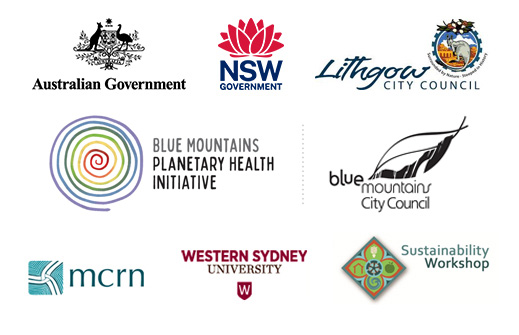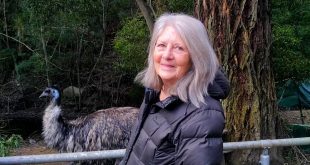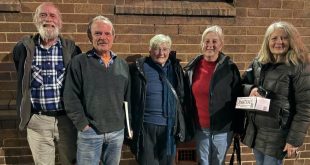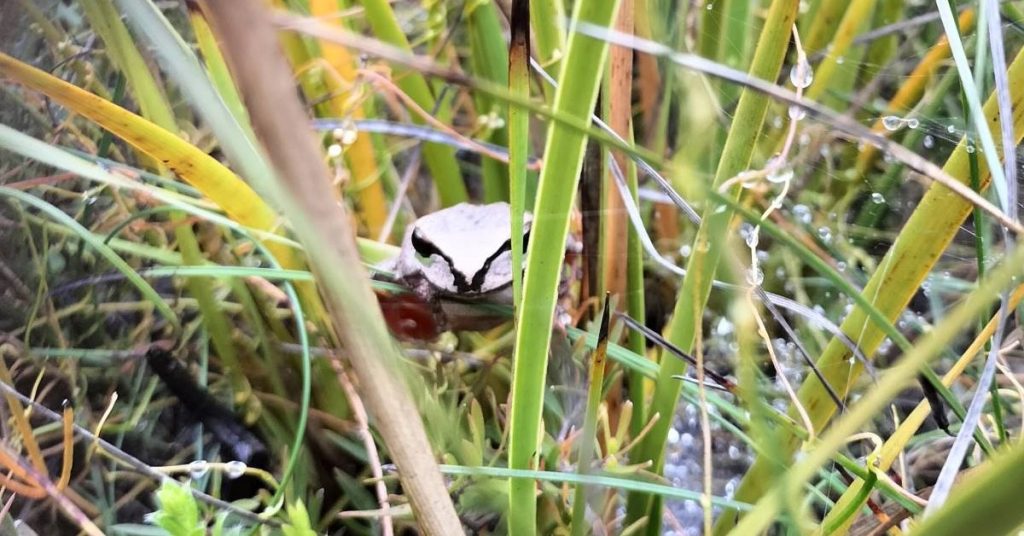
Blue Mountains Tree Frog (Litoria citropa)
Story by Tracie McMahon
A record-breaking 17,400 individual recordings were submitted to the Australian Museum as part of Frog ID Week 2023. But it’s not just about breaking records. Frogs are one of the most threatened species on Earth and they are an indicator of planetary health. The ‘croaks’, ‘bleats’ and ‘bonks’ that greet early evenings and rainy days indicate the health of our waterways. Lithgow and Oberon Landcare Association Inc. invited locals to train their ears and torches on Farmers Creek to see what could be found during FrogID Week at one of their regular monitoring sites.
Key Points:
- Frogs are an indicator species, highlighting the health of our waterways and ecosystems.
- Australia has 240 known native frogs. Fifteen are currently endangered, twelve are listed as vulnerable and four have become extinct. The Lithgow LGA has verified records of 20 unique species.
- Frog ID is an app developed in conjunction with the Australian Museum, enabling everyone to provide valuable data for scientists and specialist biologists to monitor and understand frog populations. The FrogID website is also a great source of information for keen froggers wanting to know where and what has been found in their LGA.
Frog ID Week is an Australian Museum program held in the first week of November to monitor the health of one of the most threatened species on Earth. The program began in 2017 to address the challenge of gathering data about Australia’s geographically and biologically diverse frog populations. The Australian Museum says, “People power is revolutionising our understanding of frogs and the health of our environment.”
In Lithgow, Lithgow and Oberon Landcare Association Inc. organises frog monitoring events across the entire year, aiming to raise awareness and community participation in citizen science projects and provide valuable data about the health of the local waterways. Steve Fleischmann, Landcare Coordinator explains:
“Frogs are indicators of environmental health because they are:
- Sensitive to changes in environmental conditions due to their porous skin;
- Indicators of the presence of species that they prey upon such as insects; and
- Indicators of the presence of predators such as snakes and birds, that prey upon them.”
During Frog ID week, locals were invited to take a twilight walk on Farmers Creek, learn how to use the Frog ID app and see what they could find and record.
Local Frog Populations

Striped Marsh Frog (Limnodynastes peronii) Spotted hoping across Tank St, Lithgow, in heavy rain (Photo: Steve Fleischmann)
The town of Lithgow has seven monitoring sites which are regularly checked by the Department of Planning and Environment or Landcare. The sites are at the Waterworks below Farmers Creek Dam, Brewery Lane Bridge, Inch St Park, Vale of Clwydd Creek at Lake Pillans, State Mine Creek, Geordie St Causeway and Cooerwull Road Bridge. During the last six years, frogs that have been found at these sites include:
- Blue Mountains Tree Frog, Litoria citropa
- Bleating Tree Frog, Litoria dentata
- Peron’s Tree Frog, Litoria peronii
- Whistling Tree Frog, Litoria verreauxii
- Eastern Sign-Bearing Froglet, Crinia parinsignifera
- Common Eastern Froglet, Crinia signifera
- Eastern Banjo Frog, Limnodynastes durmerilii
- Striped Marsh Frog, Limnodynastes peronii
- Spotted Marsh Frog, Limnodyastes tasmaniensis
- Bibron’s Toadlet, Pseudophyrne bibronii
Citizen Science data recorded by the FrogID App and verified by the Australian Museum indicates twenty species have been found in the Lithgow LGA since 2017. Each dot in the screenshot below, sourced from the Frog ID website (https://www.frogid.net.au/) indicates one or more verified frog calls. Each record can be ‘zoomed in’ to provide more information on the specific frogs found, including dates.

Extract from FrogID data 21-11-23, in the Lithgow LGA
Let’s go frogging
The best time to go ‘frogging’ is dusk and night as this is when they are most active. Only male frogs call and the peak frogging seasons in Lithgow are Spring, Summer and Autumn, when they are breeding and foraging. Warm rainy nights are perfect for a diversity of frogs, with FrogID records peaking during November.
Our Frog ID event is coordinated by Steve Fleischmann, Landcare Coordinator, Lithgow and Oberon Landcare. We meet at 6.30 on a balmy evening at the Brewery Lane Bridge beside a large park. Surrounding the park are century-old cottages and buildings including the historic Zig Zag Brewery, built on the site of a rock-filtered spring.
Farmers Creek begins high in the hills to the North of Clarence Station, flowing through Lithgow, then turning Southwest at Marangaroo to join Lake Lyell. The section of the creek that runs under the Brewery Lane Bridge has a natural earth and stone bed and has been adversely affected by flooding over the last few years, with loss of stream banks and widening. There are several fallen trees in the creek, and Steve explains that it is important that the debris is not cleared as it creates valuable habitat for the frogs, as well as a food source. Frogs eat the insects and algae that live in and around the fallen timber.
As we cross the bridge and walk along the creek bank, Steve points out the varied heights of native vegetation and grasses planted by the Oakey Park Landcare group, who have been working to rehabilitate the site for over five years. Large infestations of blackberry have been removed, replaced with several hundred tubestock comprising Acacia, Juncus, Leptospermum, Eucalypts and Lomandra.
A participant asks, “what was the creek like before industrialisation took over?” Steve replies that “returning the creek to its natural state is unrealistic. The goal is to increase biodiversity. The impacts of the last 150 years are many, including devegetation, interruptions to the way the creek can flow, industrial rubbish and exotic species invasion. Removing weeds that transform the ecosystem and improving connectivity between bushland fragments, increases both resilience and biodiversity.”
“One of the reasons for the Landcare frog monitoring program is to provide baseline data of environmental health. The frog monitoring sites correspond to planning units and zones in the Farmers Creek Management masterplan. The data helps us know whether or not revegetation programs are having the desired effect of improving biodiversity and to monitor for toxins potentially entering the system.”
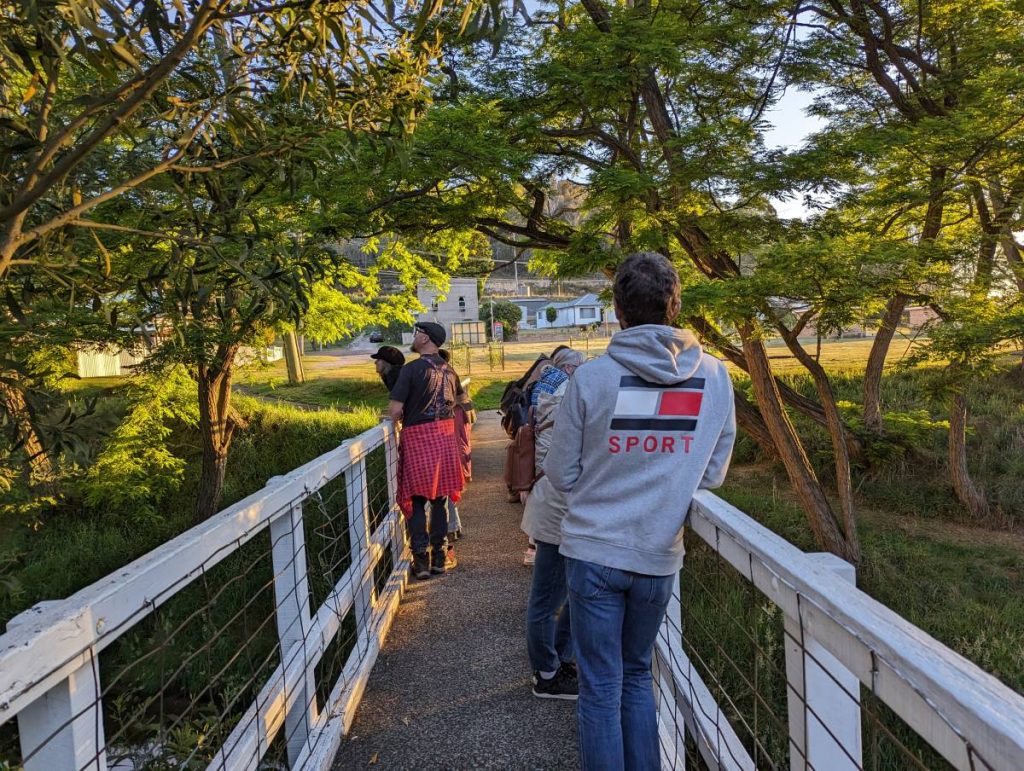
Our group of froggers at the Brewery Lane site
Using Frog ID
As we wait for the sun to dip, Steve explains how to use Frog ID, playing back the recorded calls so we can all get our ‘ears-in’ for species we are likely to find.
The website www.frogid.net.au has a full set of instructions for use and the app can be downloaded to any smartphone using Google Play (for Android) or App Store (for iPhone). The key things to remember are:
- You need to have a quiet space, so the frog call can be clearly heard.
- There must be twenty seconds of call recorded.
- All frogs are verified by a team of humans at the Australian Museum so it can take weeks for them to verify the recording, but it will be reviewed.
- To maximise the information available to the verifier, ensure you include the habitat (e.g., natural, or man-made), water body (e.g., creek, pond, lake, flooded area) and location.
- Use the suggested calls to narrow down the search. The app uses AI based on your location to suggest an ID. At Brewery Lane, Frog ID suggested 28 possible species.
- Once the sighting is verified, you will receive a verification message.
All IDs are important. Not just new and unusual sightings. I am heartened by this message from my very first ID:
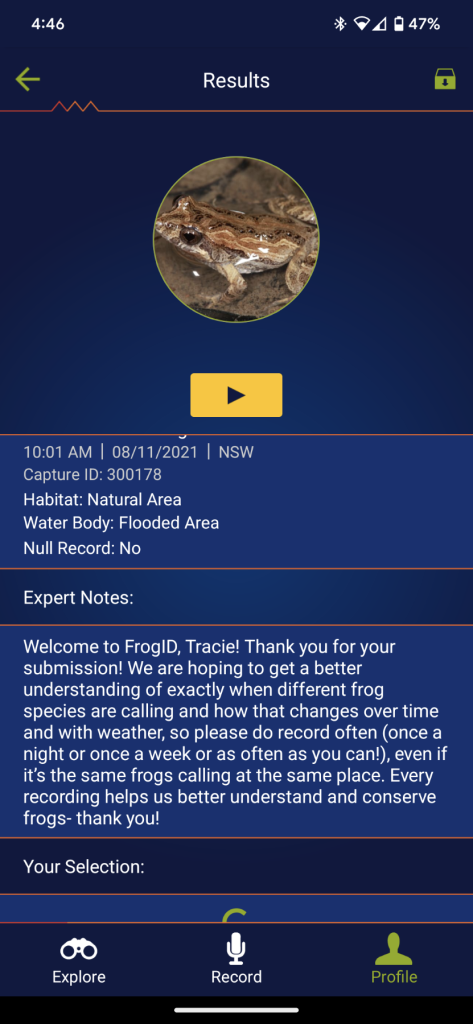
My first FrogID results
Frog listening
The sun casts a golden light across the creek as our group of a dozen avid froggers wanders along a hundred metre stretch between two bridges. Our heads turn one way and then the other, tuning our ears, making sure we have an accurate count of frogs, and are not distracted by an ‘alpha’ frog projecting up the creek.
Steve suggests he may have heard a Bleating or Screaming tree frog and plays the recording of the call on Frog ID for us to check, but alas, the rest of us were unable to verify, and he did not record the required twenty seconds of call, so the potential sighting goes unrecorded.
After our half hour wander, we agree there are around ten Common Eastern Froglets in residence, and perhaps one Banjo frog. We record our findings on the Landcare monitoring sheet and submit our calls to FrogID for verification, hoping that our ears are as finely tuned as we hoped.
Ten seconds of sound capturing the Common Eastern Froglet
A week later, I am delighted to find my recording from the Lithgow Frog ID night was verified and was correct.

The FROG ID screen confirming the ID of a Common Eastern Froglet
At the time of writing the 2023 Frog ID event resulted in 627,947 calls being submitted Australia wide. There were 985,655 verified frogs from 220 species.
In Lithgow, 4,565 recordings have been made since the start of the project in 2017 with 20 different species recorded by 350 froggers. Data from the 2023 Frog ID separated into LGAs had not been updated at the time of writing, but the frogging results for the year to September 2023 indicates there were 315 frog calls recorded from 15 different species by 54 users. By far the most common species sighted was the Common Eastern Froglet, followed by the Whistling Tree Frog and Striped Marsh Frog.
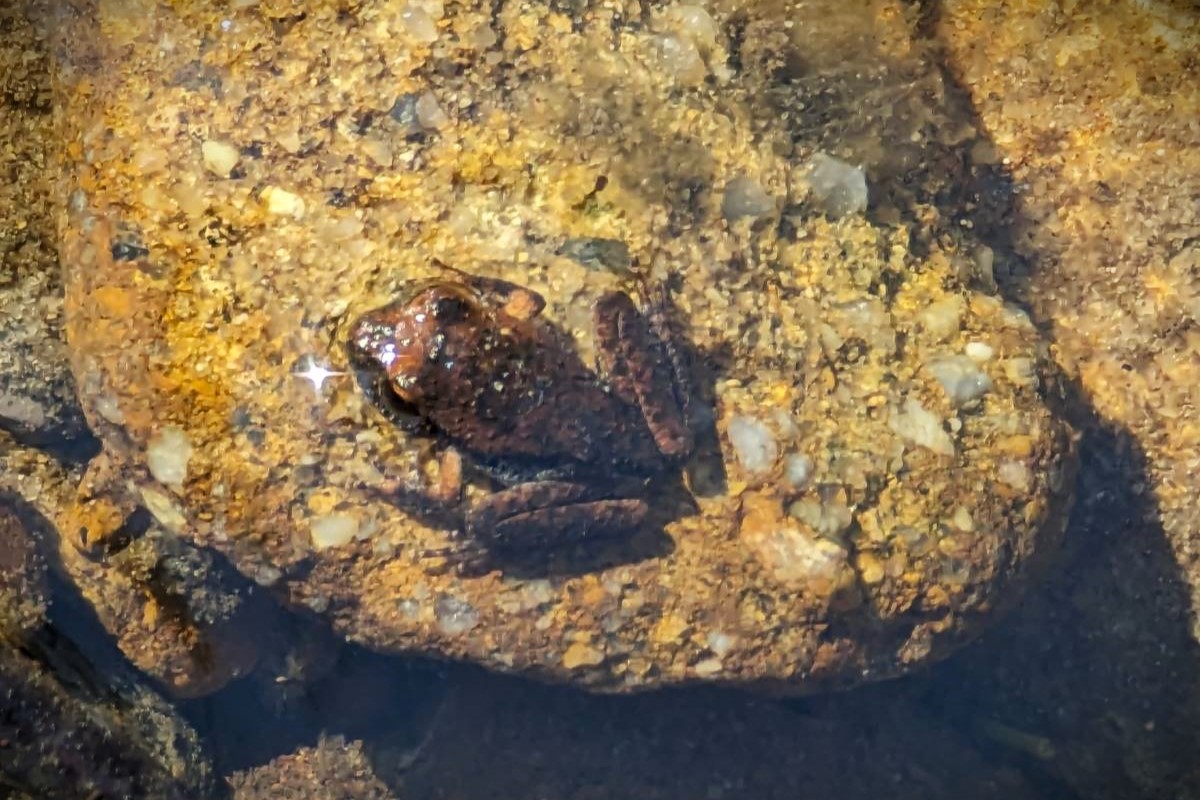
Common Eastern Froglet (Crinia signifera)
The data on the site also indicates the number of calls recorded has reduced considerably over the past few years. But remember that is a product not just of the number of frogs, but the number of froggers counting.
The Australian Museum says “saving frogs from the threats of disease, habitat loss, climate change and urbanisation is an urgent mission – Australia’s native frog species are in trouble, and we need to act fast. FrogID is revolutionising our understanding of frogs and the health of our environment.”
Seems like it might be time to grab a torch and get ‘frogging.’
Take Action:
- Learn more about frogs and the Frog ID program at www.frogid.net.au. Download the free FrogID App using Google Play for Android or App Store for iPhone and go frogging – 24/7 anywhere, anytime.
- Adopt a part of Farmers creek or other waterways, like Lake Pillans or Vale Creek, and make regular recordings and submit them.
- Join one of Lithgow and Oberon Landcare’s activities and help care for Lithgow’s environment. Contact Steve Fleischmann on 0419 795 781, or steven.fleischmann@lithgow.nsw.gov.au or find them on Facebook.
Share this article:
This story has been produced as part of a Bioregional Collaboration for Planetary Health and is supported by the Disaster Risk Reduction Fund (DRRF). The DRRF is jointly funded by the Australian and New South Wales governments.
